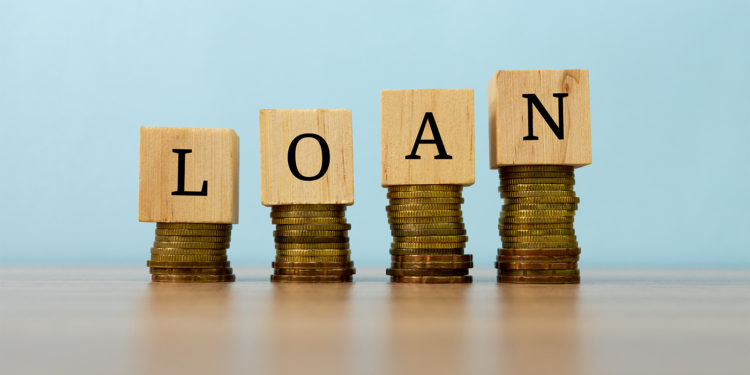Loans to private, public sectors amount to GHS 53.9bn in 2021
The Bank of Ghana has indicated that the stock of gross loans and advances given out to the public and private sectors amounted to GHC53.9 billion at the end of 2021.
The increment in gross loans and advances shows an annual growth of 12.9% as compared to the 5.8% growth in 2020.
According to the Monetary Policy Report by the Bank of Ghana, private sector credit which accounted for the biggest share of total credit (90% of total credit), recorded a marginal increase in growth from 10.6% to 11.5% during the review period.
The report also noted that the private sector experienced some significant improvement in credit growth with a 27.1% growth in 2021, contrary to the contraction in the sector in 2020 by 27% while its share in total credit inched up to 10.0 percent from 8.9 percent during the same comparative period
“Public sector credit increased by 27.1 percent in 2021 from a contraction of 27.0 percent in 2020 while its share in total credit inched up to 10.0 percent from 8.9 percent during the same comparative period. In terms of sector classification of credit allocation, the services sector held the largest share of 35.0 percent in total credit as at end-year 2021.
“This was followed by the commerce and finance sector and the manufacturing sectors with respective shares of 18.5 percent and 10.8 percent. These three sectors therefore accounted for 64.3 percent of total credit in 2021 compared with 61.9 percent in December 2020. The remaining share of 35.7 percent was distributed across five other economic sectors in various proportions. The mining and quarrying sector was the lowest recipient of industry credit with a share of 1.5 percent at end-year 2021, compared with a 2.5 percent share in the previous year,” the report stated.
Read: Three policy priorities for a robust recovery
With regards to credit risk, the banking sector’s exposure to credit risk was slightly elevated due to the lingering adverse impact of COVID-19 on borrowers’ capacity to repay their loans.
Consequently, the non-performing loans (NPL) ratio of the sector inched up from 14.8 percent in 2020 to 15.2 percent in 2021 on the back of impairment of some facilities by some banks during the period.
According to the report, asset quality risks remained elevated in 2021 as compared to the previous year’s which was due to repayment challenges as a result of covid pandemic as well as some challenges with bank’s loan recovery schemes.
“Asset quality risks have remained elevated this year compared to last year due to repayment challenges associated with the COVID-19 pandemic as well as some bank-specific loan recovery challenges. The NPL ratio increased from 14.8 percent in December 2020 to 15.2 percent in December 2021. This was attributed to the combined effect of an increase in the stock of NPLs by 16.0 percent to GH¢8.2 billion, as well as a modest growth in the stock of gross loans by 12.6 percent over the period.
“The adjusted NPL ratio (excluding the fully provisioned loan loss category) however, improved to 5.8 percent from 6.5 percent in the previous year, an indication that the increase in the NPL ratio was due to a build-up of loss category loans. The rise in the NPL ratio was mainly driven by a marginal increase in the private sector NPL ratio from 15.9 percent in December 2020 to 16.2 percent in December 2021, while the public sector NPL ratio increased from 3.3 percent to 6.1 percent over the same period.
“The increase in the industry NPL ratio reflected mainly in the construction; agriculture, forestry and fishing; transport, storage and communication; and the commerce and finance sectors. The NPL ratio of the construction and the agriculture, forestry and fishing, and the commerce and finance sectors increased by 12.7 percentage points, 9.2 percentage points and 2.9 percentage points to 35.2 percent, 29.0 percent and 20.3 percent, respectively, during the review period,” the Bank stated.
Additionally, the transport, storage and communication sector recorded an increase in its NPL ratio by 6.0 percentage points to 13.7 percent over the same comparative period. All other economic sectors recorded declines in the NPL ratios during the review period with the greatest improvement in the quality of the loan portfolio attributed to the electricity, water and gas sector.
The Bank of Ghana’s Monetary Policy Report highlights the economic and financial sector assessments that the Monetary Policy Committee considered prior to the policy decision during the 104th MPC meeting held in January 2022.








